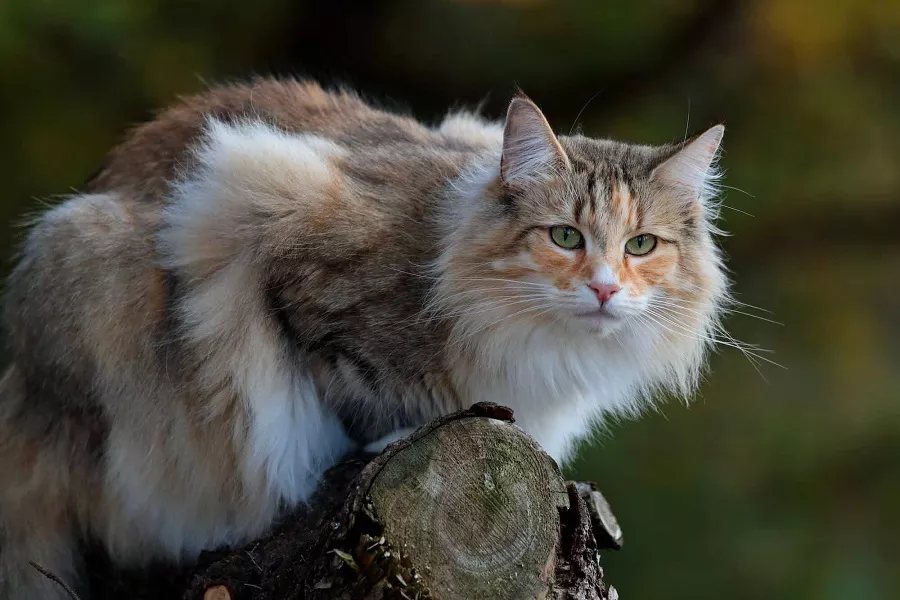What is a norwegian forest cat?
The Norwegian forest cat is a cat that lives and lives in the Norwegian forest. This is a breed unique to the Scandinavian Peninsula. Its origin is unknown. It often appears in Norse mythology as a cat like a fairy. The Norwegian Forest Cat is similar in appearance to the Maine Coon and is listed alongside the siberian forest Cat. The forest cat grows in a very cold and harsh environment, so it has a thicker coat and a stronger physique than other cats. The Norwegian forest cat has strong legs and runs very fast. It is not afraid of the sun and rain. When walking, its neck hair and tail hair are elegant and very beautiful. However, the number of cats growing in the Norwegian forest has been decreasing year by year, and there is a crisis of extinction for a while. Therefore, in the early 1970s, efforts to preserve and reproduce became particularly important.
What does the norwegian forest cat look like?
head
It is an equilateral triangle, with a short neck and well muscled [2].
ear
Medium to large, with rounded tips and broad bases, set low and alert. The ears are heavily feathered.
Eye
Big almond eyes, rich expressions, slightly raised eyes, green, gold or golden green shades, white cats can have blue eyes or mandarin duck eyes.
nose
The nose is of medium length, with a high bridge, a straight line from the eyebrows to the tip of the nose, a flat forehead, and a slightly curved skull and neck.
jaw
Strong, with slightly rounded lines.
Body
Medium length, with strong muscles and strong bone structure. The chest is broad, the overall body shape shows a sense of strength, and the waist is deep; the waist is large, and there is no fat feeling. Male cats are larger and feel more imposing; female cats are smaller and more graceful.
limbs
Medium length, hind legs longer than forelegs, allowing the rump to be higher than the shoulders. The thighs are well muscled and the calves strong. Seen from behind, the hind legs are straight.
norwegian forest cat living habits
Norwegian Forest Cats are introverted, independent, smart and agile, alert, cautious, adventurous and active, good at catching and hunting, and good at climbing trees and rocks. Therefore, it is not suitable to be kept indoors for a long time, and it is best to be kept in a family with a courtyard and a relatively spacious environment.
norwegian forest cat rearing
Liver: Norwegian forest cats love to eat animal livers and refuse to eat other foods. Animal livers contain large amounts of vitamin A, but taking too much vitamin A can lead to muscle stiffness, neck pain, deformed bones and joints, and liver disease.
Meat: Although the Norwegian Forest Cat’s diet should be meat-based, feeding cats only meat can lead to uneven intake of minerals and vitamins, which can lead to severe bone metabolic disorders.
Cod liver oil: Special care should be taken when supplementing cats with additional vitamins and minerals, as excessive consumption of cod liver oil can lead to excessive intake of vitamin A and vitamin D, which can lead to bone disease.
High-fat foods: If the Norwegian Forest cat’s diet contains a lot of fatty fish or stale fatty meat, it can lead to insufficient vitamin E intake, which can cause the cat’s body fat to become inflamed and extremely painful.
Raw fish: Some raw fish contain enzymes that can destroy vitamin B1, and the lack of vitamin B1 can lead to neurological diseases in cats, which can be fatal in severe cases. This enzyme can be destroyed by heating, so be sure to cook the fish after cooking. Feed the cat again.


























